从光说起
先看一段wiki中对光的定义
光是一种人类眼睛可以见的电磁波(可见光谱),视知觉就是对于光的知觉[1]。光只是电磁波谱上的某一段频谱,一般是定义为波长介于400至700纳米(nm)之间的电磁波,也就是波长比紫外线长,比红外线短的电磁波。有些资料来源定义的可见光的波长范围也有不同,较窄的有介于420至680纳米,较宽的有介于380至800纳米。
光既是一种高频的电磁波,又是一种由称为光子的基本粒子组成的粒子流。因此光同时具有粒子性与波动性,或者说光具有“波粒二象性”。
按波动理论来解释,不同颜色的光就是不同波长的电磁波。
光的衰减(Attenuation)
任何点光源的光照亮度随着距离增加会迅速衰减。这个就叫光的衰减。
不同波长的光有不同的衰减方式,还有就是灯光所处的环境,比如是否有雾霾,下面是常见的几种衰减模型。
这里实现一个衰减的类,作为灯光的成员
#pragma once
class Attenuation
{
public:
Attenuation(float range, float constant, float linear, float quadratic) :
m_range(range),
m_constant(constant),
m_linear(linear),
m_quadratic(quadratic) {}
inline float getRange() const { return m_range; }
inline float getConstant() const { return m_constant; }
inline float getLinear() const { return m_linear; }
inline float getQuadratic() const { return m_quadratic; }
private:
float m_constant;
float m_linear;
float m_quadratic;
float m_range;
};
Attenuation类有4个成员后面三项是常量项,线性项还有二次项,最后的衰减率的计算是由下面的公式确定的,Distance表示光源到点的距离。
attenuation = Constant + Linear * Distance + Quadratic * Distance ^ 2
第一个成员表示光源照亮的范围,下面有一个表可以用来查询四者之间的关系
当你选定了一个Rang的时候,你就可以找到对应的constant,linear 和 quadratic。
Constant 越趋近于0,灯光就越亮,反之越暗。
Linear越大,灯光衰减得就越快。不建议改变Quadratic值或者减少Linear的值,这样做需要重新计算Range.
减少Range值可以提升渲染的速度,但是减少得太多,在游戏中可能会造成灯光效果的突变。
点光源
首先创建一个BaseLight类,作为各种灯光的基类
#pragma once
#include "common.h"
class BaseLight
{
public:
BaseLight(const glm::vec3& color, const glm::vec3& pos, float intensity) :
m_color(color),
m_pos(pos),
m_intensity(intensity) {}
inline glm::vec3 getPos() const {return m_pos;}
inline float getIntensity() { return m_intensity; }
inline glm::vec3 getColor() { return m_color; }
private:
glm::vec3 m_color;
glm::vec3 m_pos;
float m_intensity;
};
注意,很多教程上光的属性有ambient,diffuse,specular之类,按照前面的原理,这都是不科学的,包括材质的Ambient,其实环境光应该是一个全局常量,所以材质也只能diffuse, specular. 插一段StackOverflow上的回答。
这里基础 灯光只有三个成员,颜色,位置,强度。
点光源的类
#pragma once
#include "baselight.h"
#include "attenuation.h"
class PointLight :public BaseLight
{
public:
public:
PointLight(const glm::vec3& color = glm::vec3(0, 0, 0), const glm::vec3& pos = glm::vec3(0, 0, 0), const float intensity = 1.0, const Attenuation& atten = Attenuation()):
BaseLight(color,pos,intensity),m_attenuation(atten){}
inline const Attenuation& getAttenuation() const { return m_attenuation; }
private:
Attenuation m_attenuation;
};
灯光的初始化,So easy.
pointLight = new PointLight(glm::vec3(0, 1, 0), glm::vec3(3, 3, 3), 1.8, Attenuation(20, 1.0, 0.22, 0.20));
给shader传参数
prog.setUniform("pointLight.pos", pointLight->getPos());
prog.setUniform("pointLight.color", pointLight->getColor());
prog.setUniform("pointLight.intensity", pointLight->getIntensity());
prog.setUniform("pointLight.constant", pointLight->getAttenuation().getConstant());
prog.setUniform("pointLight.linear", pointLight->getAttenuation().getLinear());
prog.setUniform("pointLight.quadratic", pointLight->getAttenuation().getQuadratic());
prog.setUniform("pointLight.range", pointLight->getAttenuation().getRange());接下来就是shader了
vertex shader 就是传个值。
#version 400
layout (location = 0) in vec3 VertexPosition;
layout (location = 1) in vec2 VertexUv;
layout (location = 2) in vec3 VertexNormal;
uniform mat4 MVP;
out vec3 position;
out vec3 normal;
void main()
{
normal = VertexNormal;
position = VertexPosition;
gl_Position = MVP * vec4( VertexPosition, 1.0);
}
fragment shader也就是三板斧,ambient,diffuse,specular,具体计算看Code
#version 400
struct PointLight
{
float range;
vec3 pos;
vec3 color;
float intensity;
float constant;
float linear;
float quadratic;
};
struct MaterialInfo{
vec3 diffuse;
vec3 specular;
float shininess;
};
uniform vec3 ambient;
uniform PointLight pointLight;
uniform MaterialInfo materialInfo;
uniform vec3 cameraPosition;
in vec3 position;
in vec3 normal;
out vec4 finalColor;
vec3 calculatePointLight(PointLight light, vec3 normal, vec3 fragPos, vec3 viewDir)
{
vec3 lightDir = normalize(light.pos - fragPos);
//ambient
vec3 ambFactor = ambient;
// Diffuse shading
float diffFactor = max(dot(normal, lightDir), 0.0) * light.intensity ;
// Specular shading
vec3 reflectDir = normalize(reflect(-lightDir, normal));
float specFactor = pow(max(dot(viewDir, reflectDir), 0.0), materialInfo.shininess) * light.intensity;
// Attenuation
float distance = length(light.pos - fragPos);
float attenuation = 1.0f;
if(distance < light.range)
{
attenuation = 1.0f / (light.constant + light.linear * distance +
light.quadratic * (distance * distance));
}
vec3 ambientColor = ambFactor;
vec3 diffuseColor = diffFactor * materialInfo.diffuse * light.color;
vec3 specularColor = specFactor * materialInfo.specular * light.color ;
return ambientColor + attenuation * (diffuseColor + specularColor);
}
void main(void)
{
vec3 totalLight = vec3(0,0,0);
vec3 norm = normalize(normal);
vec3 viewDir = normalize(cameraPosition - position);
totalLight += calculatePointLight(pointLight, normal, position, viewDir);
finalColor = vec4(totalLight, 1.0);
return;
}
运行结果
多光源
先看下最终的效果,是不是有点炫酷!?
整体的思路是:创建3个点光源,然后传到把点光源的信息都传递进去,开一个定时器,不断更新光源的位置,再更新shader数据,最后再绘制。
首先创建一个简单的场景类,注意这个类是要继承QObject的,因为要用到Qt的Signal/Slot机制。
#ifndef SCENE_H
#define SCENE_H
#include <vector>
#include <QDebug>
#include <QTimer>
#include <QObject>
#include "light/pointlight.h"
#include "shader/shaderprogram.h"
#include <QObject>
class Scene : public QObject
{
Q_OBJECT
public:
Scene(QObject *parent = 0);
~Scene();
void addLight(PointLight* pLight);
void setShader(ShaderProgram *pShader);
void setUniform();
private:
std::vector<PointLight * > pointLights;
ShaderProgram *shaderProgram;
QTimer *updateTimer;
private slots:
void updateLight();
signals:
void updateScene();
};
#endif // SCENE_H
接下来是cpp的实现
#include "scene.h"
Scene::Scene(QObject *parent)
: QObject(parent)
{
updateTimer = new QTimer();
updateTimer->setInterval(30);
connect(updateTimer, SIGNAL(timeout()), this, SLOT(updateLight()));
updateTimer->start();
}
Scene::~Scene()
{
for (int i = 0; i < pointLights.size(); i++)
{
delete pointLights[i];
}
}
void Scene::addLight(PointLight* pLight)
{
pointLights.push_back(pLight);
}
void Scene::setUniform()
{
char tmp[100];
int count = static_cast<int>(pointLights.size());
shaderProgram->setUniform("pointLightCount", count);
for (int i = 0; i < count; i++)
{
sprintf(tmp, "pointLights[%d].pos", i);
shaderProgram->setUniform(tmp, pointLights[i]->getPos());
sprintf(tmp, "pointLights[%d].color", i);
shaderProgram->setUniform(tmp, pointLights[i]->getColor());
sprintf(tmp, "pointLights[%d].intensity", i);
shaderProgram->setUniform(tmp, pointLights[i]->getIntensity());
sprintf(tmp, "pointLights[%d].constant", i);
shaderProgram->setUniform(tmp, pointLights[i]->getAttenuation().getConstant());
sprintf(tmp, "pointLights[%d].linear", i);
shaderProgram->setUniform(tmp, pointLights[i]->getAttenuation().getLinear());
sprintf(tmp, "pointLights[%d].quadratic", i);
shaderProgram->setUniform(tmp, pointLights[i]->getAttenuation().getQuadratic());
sprintf(tmp, "pointLights[%d].range", i);
shaderProgram->setUniform(tmp, pointLights[i]->getAttenuation().getRange());
}
}
void Scene::setShader(ShaderProgram *pShader)
{
shaderProgram = pShader;
}
void Scene::updateLight()
{
glm::mat4 transMatrix = glm::translate(glm::mat4(1.0f), glm::vec3(0, 2, 0));
glm::mat4 rotationX = glm::rotate(transMatrix, 0.1f, glm::vec3(1, 0, 0));
glm::mat4 rotationY = glm::rotate(transMatrix, 0.1f, glm::vec3(0, 1, 0));
glm::mat4 rotationZ = glm::rotate(transMatrix, 0.1f, glm::vec3(0, 0, 1));
glm::vec4 newPos = glm::vec4(pointLights[0]->getPos(), 1.0f) * rotationX;
pointLights[0]->setPos(glm::vec3(newPos));
newPos = glm::vec4(pointLights[1]->getPos(), 1.0f) * rotationY;
pointLights[1]->setPos(glm::vec3(newPos));
newPos = glm::vec4(pointLights[2]->getPos(), 1.0f) * rotationZ;
pointLights[2]->setPos(glm::vec3(newPos));
this->setUniform();
emit updateScene();
}解释两个函数,
setUniform
向shader中传递当前灯光的参数。
updateLight
更新灯光的位置,不知道咋转的回去看线性代数。想偷懒的看这个 Real-Time Rendering (2) - 变换和矩阵(Transforms and Matrics)。
更新完之后调用setUniform传递参数。
最后看他们的初始化
void MainWidget::initScene()
{
// Calculate aspect ratio
float aspect = float(width()) / float(height() ? height() : 1);
const float zNear = 0.01, zFar = 100.0, fov = 45.0;
// Set projection
mainCamera = new Camera(glm::vec3(0, 5, 10), glm::vec3(0, 3, 0), glm::vec3(0.0, 1.0, 0.0));
mainCamera->setPerspectiveParameter(fov, aspect, zNear, zFar);
modelMatrix = glm::mat4(1.0f);
scene = new Scene();
connect(scene, SIGNAL(updateScene()), this, SLOT(update()));
scene->setShader(&prog);
PointLight *pointLight1 = new PointLight(glm::vec3(0, 1, 0), glm::vec3(0, 2, 3), 1.8, Attenuation(20, 0.1, 0.22, 0.20));
PointLight *pointLight2 = new PointLight(glm::vec3(1, 0, 0), glm::vec3(3, 2, 0), 1.8, Attenuation(20, 0.1, 0.22, 0.20));
PointLight *pointLight3 = new PointLight(glm::vec3(0, 0, 1), glm::vec3(-3, 2, 0), 1.8, Attenuation(20, 0.1, 0.22, 0.20));
scene->addLight(pointLight1);
scene->addLight(pointLight2);
scene->addLight(pointLight3);
compileShader();
setUniform();
objModel.loadFromFile("../Assets/model/bunny.obj");
objModel.setShader(prog);
}Fragment Shader需要做一些改变
#version 400
const int MAX_POINT_LIGHTS = 5;
struct PointLight
{
float range;
vec3 pos;
vec3 color;
float intensity;
float constant;
float linear;
float quadratic;
};
struct MaterialInfo{
vec3 diffuse;
vec3 specular;
float shininess;
};
uniform vec3 ambient;
uniform int pointLightCount;
uniform PointLight pointLights[MAX_POINT_LIGHTS];
uniform MaterialInfo materialInfo;
uniform vec3 cameraPosition;
in vec3 position;
in vec3 normal;
out vec4 finalColor;
vec3 calculatePointLight(PointLight light, vec3 normal, vec3 fragPos, vec3 viewDir)
{
vec3 lightDir = normalize(light.pos - fragPos);
//ambient
vec3 ambFactor = ambient;
// Diffuse shading
float diffFactor = max(dot(normal, lightDir), 0.0) * light.intensity ;
// Specular shading
vec3 reflectDir = normalize(reflect(-lightDir, normal));
float specFactor = pow(max(dot(viewDir, reflectDir), 0.0), materialInfo.shininess) * light.intensity;
// Attenuation
float distance = length(light.pos - fragPos);
float attenuation = 1.0f;
if(distance < light.range)
{
attenuation = 1.0f / (light.constant + light.linear * distance +
light.quadratic * (distance * distance));
}
vec3 ambientColor = ambFactor;
vec3 diffuseColor = diffFactor * materialInfo.diffuse * light.color;
vec3 specularColor = specFactor * materialInfo.specular * light.color ;
//return ambientColor + attenuation * (diffuseColor + specularColor);
return attenuation * (diffuseColor + specularColor);
}
void main(void)
{
vec3 totalLight = vec3(0,0,0);
vec3 norm = normalize(normal);
vec3 viewDir = normalize(cameraPosition - position);
for(int i = 0; i < pointLightCount; i++)
{
totalLight += calculatePointLight(pointLights[i], normal, position, viewDir);
}
finalColor = vec4(totalLight, 1.0);
return;
}
打完收工。
参考
Point Light Attenuation - http://www.ogre3d.org/tikiwiki/tiki-index.php?page=-Point+Light+Attenuation
Multiple lights - http://www.learnopengl.com/#!Lighting/Multiple-lights
Modern OpenGL 07 – More Lighting: Ambient, Specular, Attenuation, Gamma - http://www.tomdalling.com/blog/modern-opengl/07-more-lighting-ambient-specular-attenuation-gamma/
BennyQBD/3DEngineCpp - https://github.com/BennyQBD/3DEngineCpp










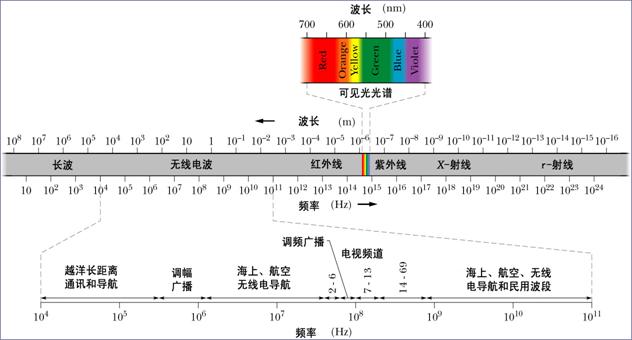
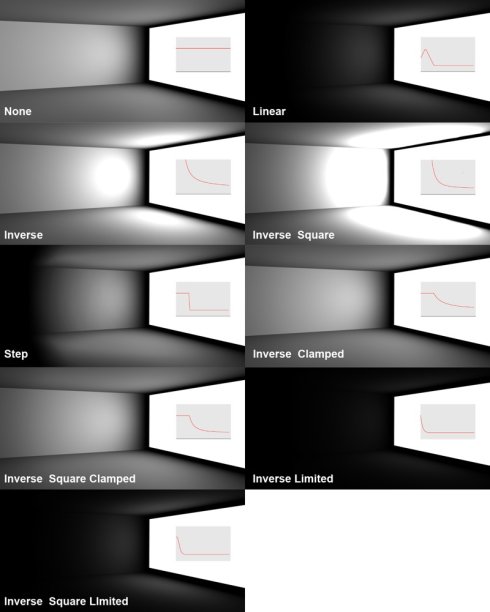
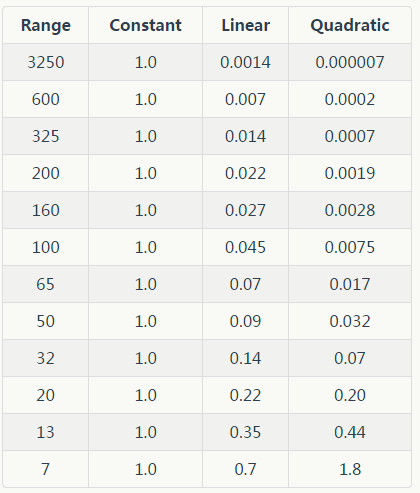

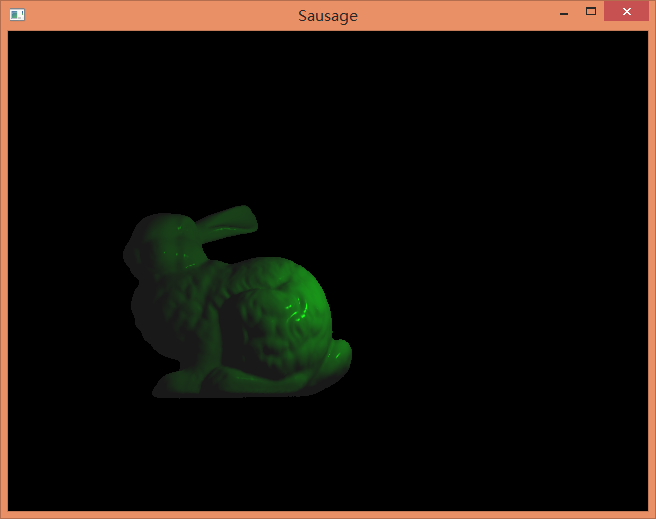
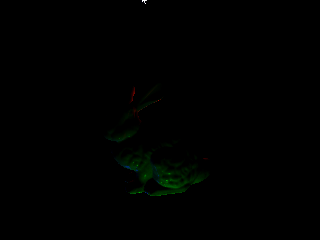














 89
89

 被折叠的 条评论
为什么被折叠?
被折叠的 条评论
为什么被折叠?








